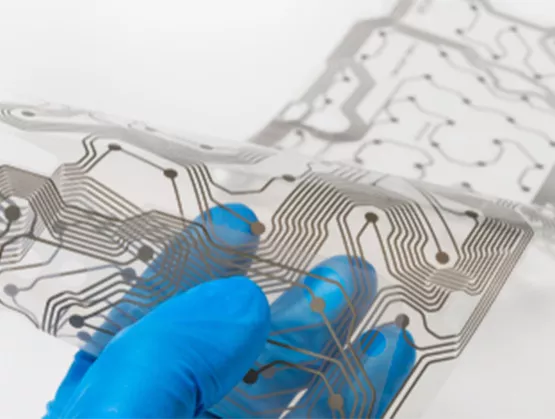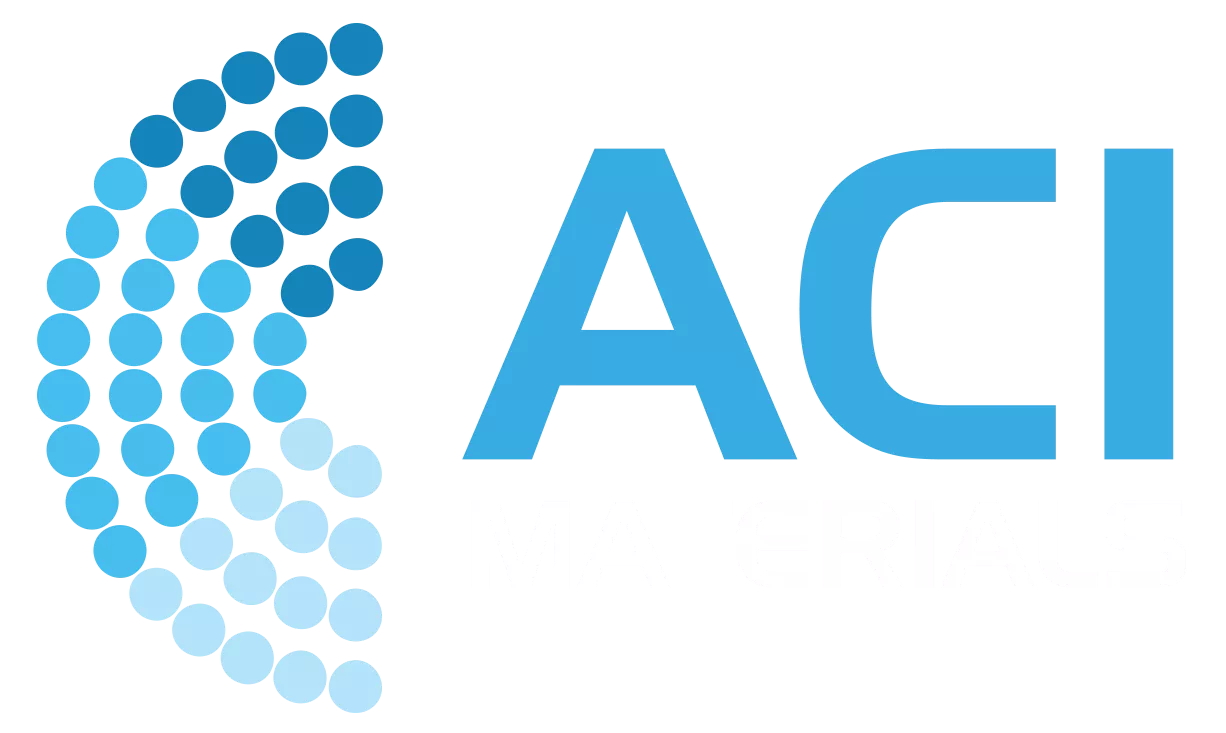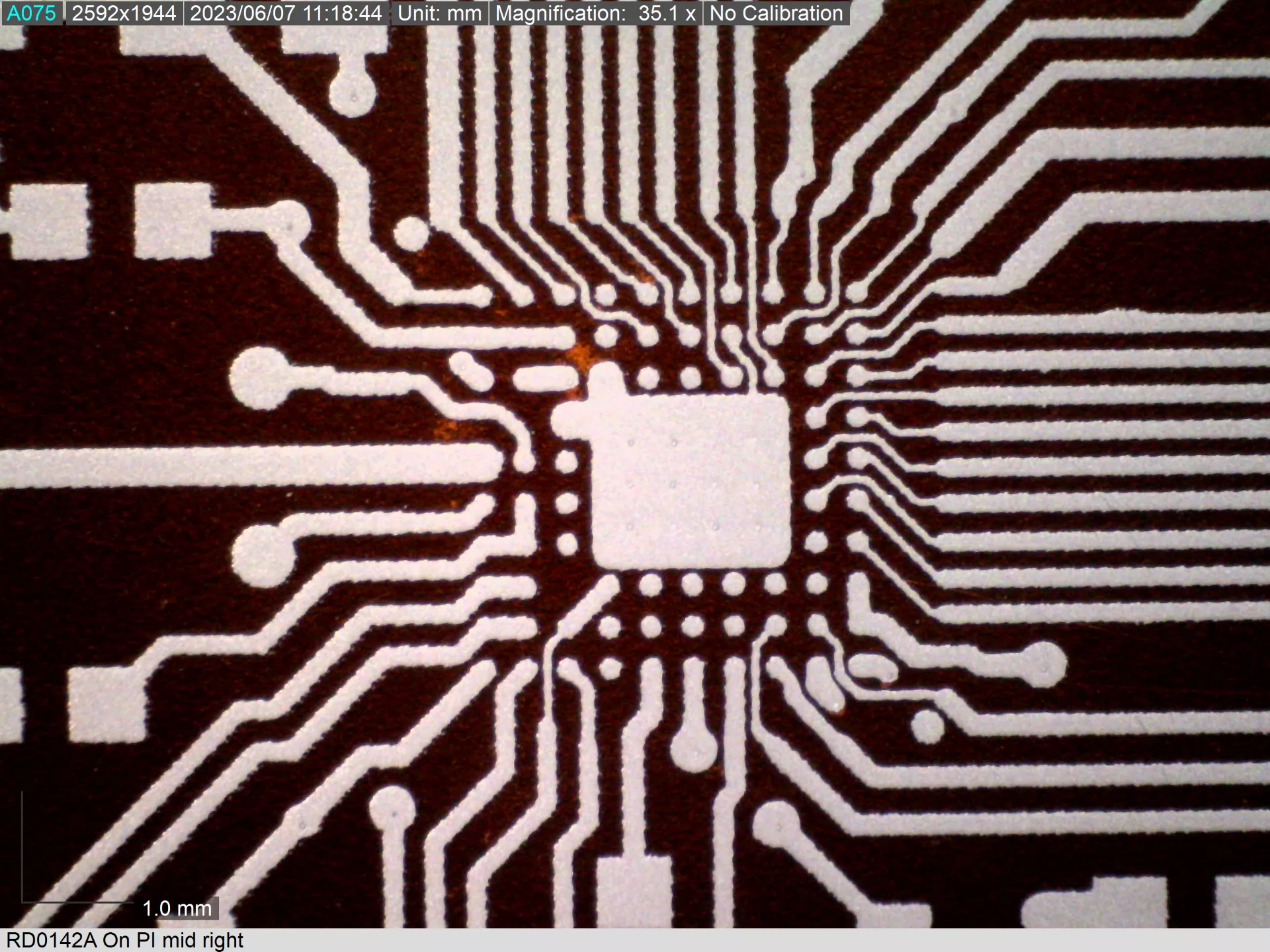
Fine pitch flexible printed circuit (FPC) connectors promise to reduce the cost of manufacturing flexible circuits and, in turn, everything from toys to flexible hybrid electronics (FHE) medical devices that come in contact with biofluids. Once these printed silver circuits are ready for disposal, the silver can be reclaimed after the waste is incinerated.
In a recent project funded by FlexTech, a SEMI Technology Community, Goleta, Calif.-based ACI Materials developed alchemy conductive inks optimized to enable the printing of finer pitches on flexible and 3D printed circuit structures than possible with conventional polymer thick film inks.
Completed in 21 months at cost of $510,000, the project produced a leap in performance with alchemy inks, which are up to four times more conductive than the best traditional polymer thick film (PTF) silver inks. The new ink formulations boast superior electrical properties when cured for high-volume production.
 The new alchemy conductive inks also offer significant performance advantages over sintering inks in adhesion, current carrying capabilities, and mechanical properties. What’s more, they can sinter at greater film thickness and faster than nano inks. The inks enable lower sheet resistance interconnects and better-performing antennas than previously possible with printed conductors.
The new alchemy conductive inks also offer significant performance advantages over sintering inks in adhesion, current carrying capabilities, and mechanical properties. What’s more, they can sinter at greater film thickness and faster than nano inks. The inks enable lower sheet resistance interconnects and better-performing antennas than previously possible with printed conductors.
Using reflow solder to attach surface mount devices (SMD) on polyethylene terephthalate (PET) films promises to enable the production of fully additively manufactured circuits at a lower cost than possible with etched copper foil-based flexible printed circuitry (FPC).
“ACI is receiving extensive compliments from customers saying these are the most conductive printable conductors they have ever used,” said Mike Mastropietro, CTO and director of R&D at ACI Materials. “They are reporting superior electrical performance, even better than ACI specs, with these materials. The ability to use solder-based attach with a printed conductor that can be cured in a conveyor oven is game-changing for many of our customers.”
Technological Advancements
The ability to sinter thick films at low enough temperatures and short enough times for use in traditional screen printing and tunnel curing ovens has so far held back additive manufacture of flexible hybrid electronics. Printing fine pitches with screen printing (≤100 µm) and nScrypt 3DN microdispense-based direct write enables the production of higher density interconnects than previously possible at real production scales.
Leveraging solders to attach surface mount components to alchemy materials allows printing to finer pitches and land pad sizes than most require for surface-mounted devices attach with the isotropic electrically conductive adhesives (ECAs) used today. Solders can be reflowed in minutes in conveyer ovens, whereas typical ECAs are cured in batch ovens, making their use labor-intensive and cost prohibitive.

The fan out area of the A21 Modular Flexible Microcontroller previously required laser ablation to maintain proper trace to pad clearance. Alchemy ink allows for sufficient resolution without the need for laser ablation.
Printing circuits is more eco-friendly than manufacturing printed circuit boards (PCB) since it minimizes water usage and is an additive process that reduces the risk of polluting wastewater streams with heavy metals. What’s more, the circuits can be formulated with bio-renewable solvents to allow reflow soldering with low-temperature solders (160-170oC), consuming less energy than SAC (tin-silver-copper) solders, which require higher reflow temperatures.
Most early adopters of FPCs are manufacturers of automotive subcomponents, though makers of mobile device antennas on 2D or 3D surfaces, LED lighting arrays, medical devices, busbars for heaters and transparent touch sensors and other devices are also taking advantage of the conductors.
Heidi Hoffman is senior director of Technology Communities Marketing at SEMI.